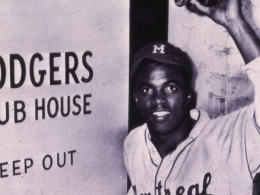Cracker Barrel used to be a place where families could count on tradition.
The restaurant chain built its reputation on old-fashioned country hospitality and nostalgic Americana.
But Cracker Barrel just betrayed their most loyal customers with one decision that left them heartbroken.
Corporate executives destroy 48 years of beloved branding
For nearly five decades, Cracker Barrel’s logo featured the instantly recognizable image of a man resting by a barrel.
It was more than just corporate branding – it was a symbol of American tradition and simpler times.
But on Tuesday, executives announced they’re scrapping that beloved imagery forever.
The new logo strips away all the classic elements that made Cracker Barrel special.
Gone is the man by the barrel that customers have loved since 1977.
In its place? A sterile, text-only design that looks like it was created by the same corporate consultants who ruin every American institution.
Chief Marketing Officer Sarah Moore tried to spin the destruction as progress.
"We believe in the goodness of country hospitality, a spirit that has always defined us," Moore said in a statement.¹
But if that were true, why are they destroying everything that actually defined them?
The logo change is part of Cracker Barrel’s "All the More" campaign that executives claim will position the brand for the future.
What they really mean is positioning the brand to look like every other soulless corporate chain.
Heartbroken customers watch their childhood memories disappear
The logo massacre is just the latest betrayal in Cracker Barrel’s war on nostalgia.
The company has been systematically destroying the dark, rustic aesthetic that made their restaurants feel like stepping back in time.
They’re replacing it with what they call a modern farmhouse look – corporate speak for sterile and forgettable.
Rachel Love captured the heartbreak perfectly in a TikTok that went viral.
"When Cracker Barrel took away the last piece of nostalgia you had left," she wrote.
"It was just heartbreak," Love told the Wall Street Journal. "My 14-year-old son was devastated."¹
That’s what these corporate executives don’t understand – or don’t care about.
This isn’t just about restaurant decor or logos.
It’s about destroying the few remaining places where American families could experience authentic tradition.
Cracker Barrel used to be where three generations could sit together and feel connected to something bigger than themselves.
Now it’s becoming another generic restaurant that could be anywhere, selling anything, to anyone.
The corporate takeover of American culture continues
Here’s what’s really happening at Cracker Barrel.
The same forces that have destroyed every other American institution have finally come for this one too.
Corporate consultants convinced executives that tradition is bad for business.
They probably ran focus groups and hired diversity consultants who told them the old logo was "problematic."
So they’re systematically erasing everything that made Cracker Barrel special.
The company claims they’re responding to customer feedback, but that’s corporate doublespeak.
"We deeply appreciate the passion our guests have for our brand and are thankful for the thoughtful feedback they continue to share," a spokesperson said.²
But if they actually cared about customer feedback, they’d stop destroying what customers love.
The real feedback is coming from customers like Rachel Love and her son – and they’re heartbroken.
Country music artist Jordan Davis is now starring in commercials for the "new" Cracker Barrel.
"Cracker Barrel has always felt like home to me," Davis said.³
But the Cracker Barrel that felt like home is disappearing.
What’s replacing it is just another corporate restaurant trying to be everything to everyone – and meaning nothing to anyone.
This is how American culture dies.
Not with dramatic protests or government mandates.
But with corporate executives in boardrooms deciding that tradition needs to be "modernized" until it disappears completely.
¹ Brooke Steinberg, "Cracker Barrel’s controversial rebrand won’t be stopped — here’s how the menus are changing," New York Post, August 20, 2025.
² Ibid.
³ Ibid.
















